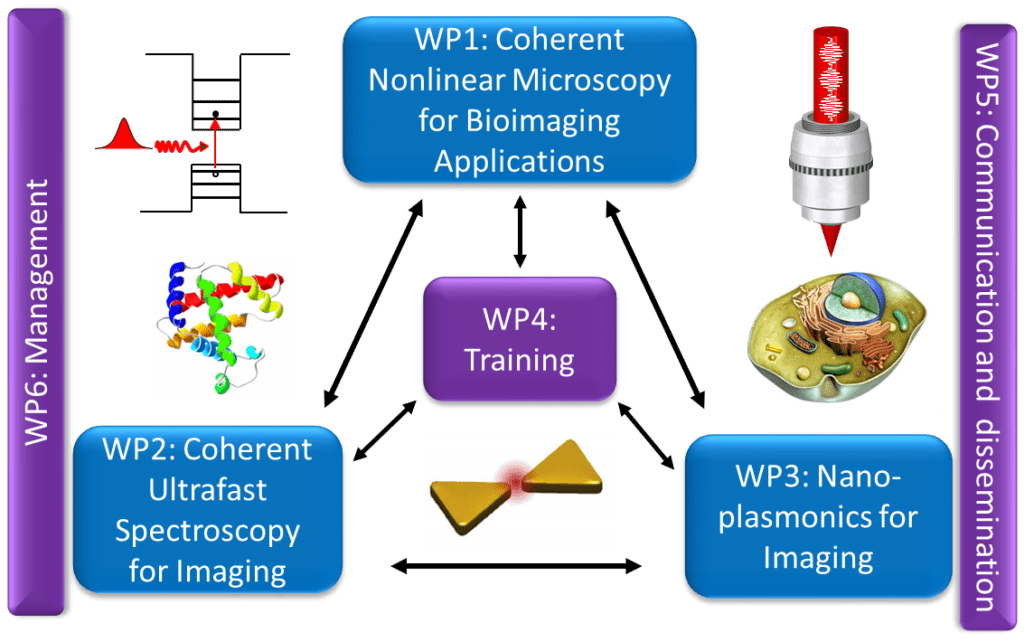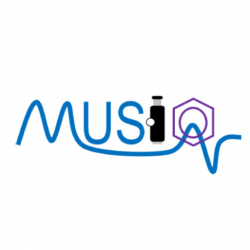
WP1
Addresses the application of coherent nonlinear optical microscopy to bioimaging. It focuses on the techniques well established in the beneficiaries’ laboratories, based on label-free CRS combined with SHG/THG and compared with TPF, and how these methods can be applied to address real-world biological questions, such as the existence of lipid rafts in cell membranes, thought to have a key role in diseases including Alzheimer and HIV, the kinetics of DNA synthesis and ribosomal assembly, and tracking drug molecules to sub-cellular locations. Specific emphasis is devoted to progress quantitative chemical imaging, namely extracting quantitative information on the chemical composition, concentration and spatial distribution of biomolecules and compounds in physically meaningful units. The manipulation and control of the polarisation state of light is also investigated, and how this can be exploited in coherent nonlinear optical microscopy applied to bioimaging.
WP2
Addresses the core vision of MUSIQ, i.e. how ultrafast laser spectroscopy of quantum coherences can be combined with high-spatial resolution imaging. It considers the recent development of ultrafast 2DES with coherent field readout to study quantum coherences, both experimentally and theoretically, and how this can be merged with micro-spectroscopy of biologically relevant single quantum emitters, exploiting the availability of cryo-microscopy for low temperature measurements where quantum coherences occur on a longer, more accessible, time scale. Quantum coherences of single molecules at room temperature will be investigated first using fluorescence readouts, with the ambition to achieve also coherent field readouts.
WP3
Addresses the use of plasmonic nanostructures to achieve spatial super-resolution (nanoscopy) and high detection sensitivity in bioimaging with coherent nonlinear microscopy. The optical properties of plasmonic nanostructures are used as local sensors of changes in the environment. The local field enhancement occurring in the vicinity of a plasmonic nanostructure is also investigated, and how this can be exploited in the various coherent nonlinear optical micro-spectroscopy modalities, namely CSR/SHG/THG and 2DES.

